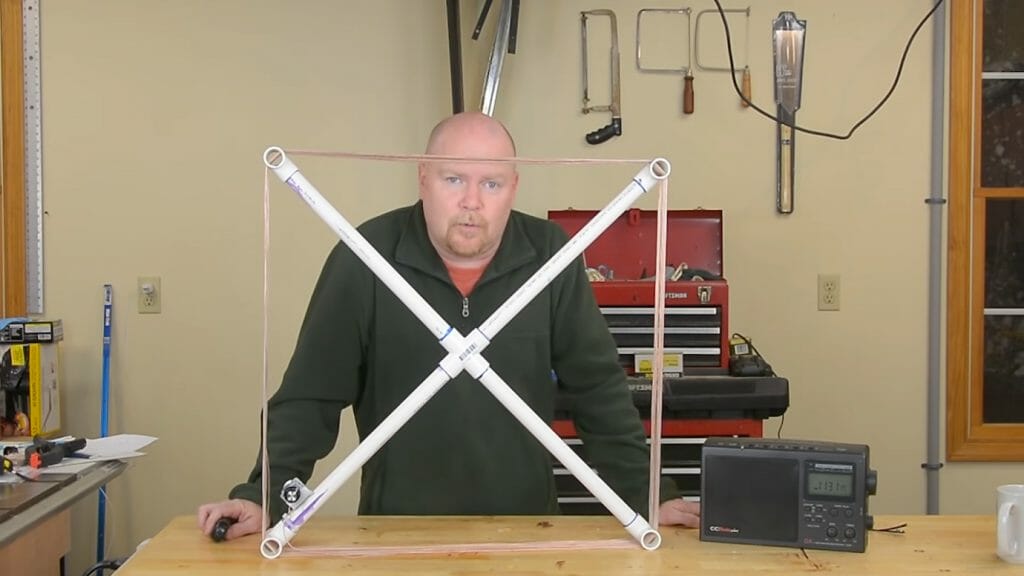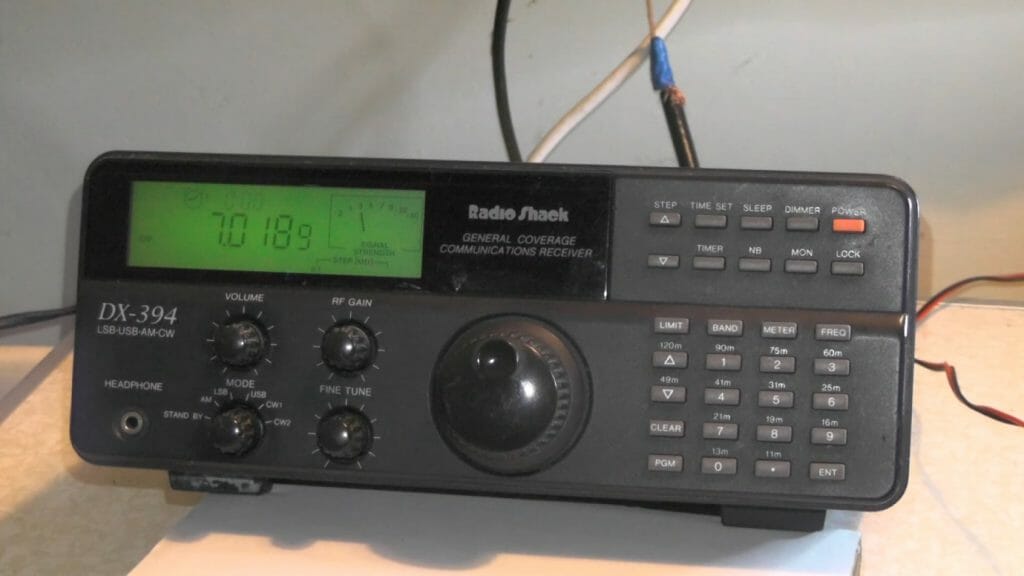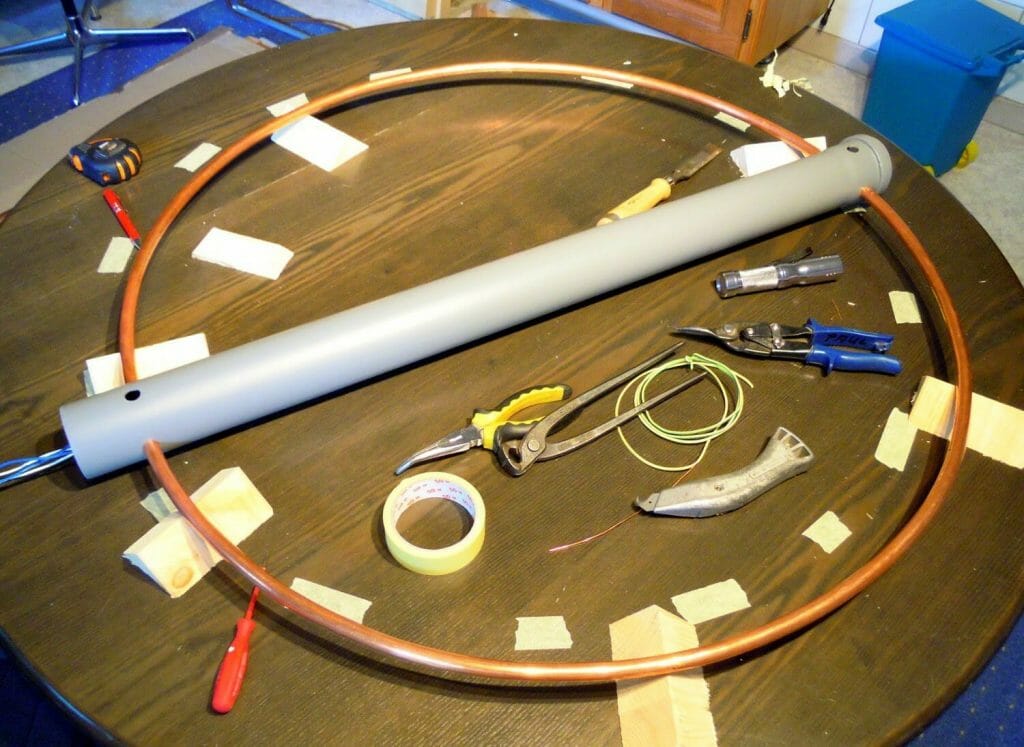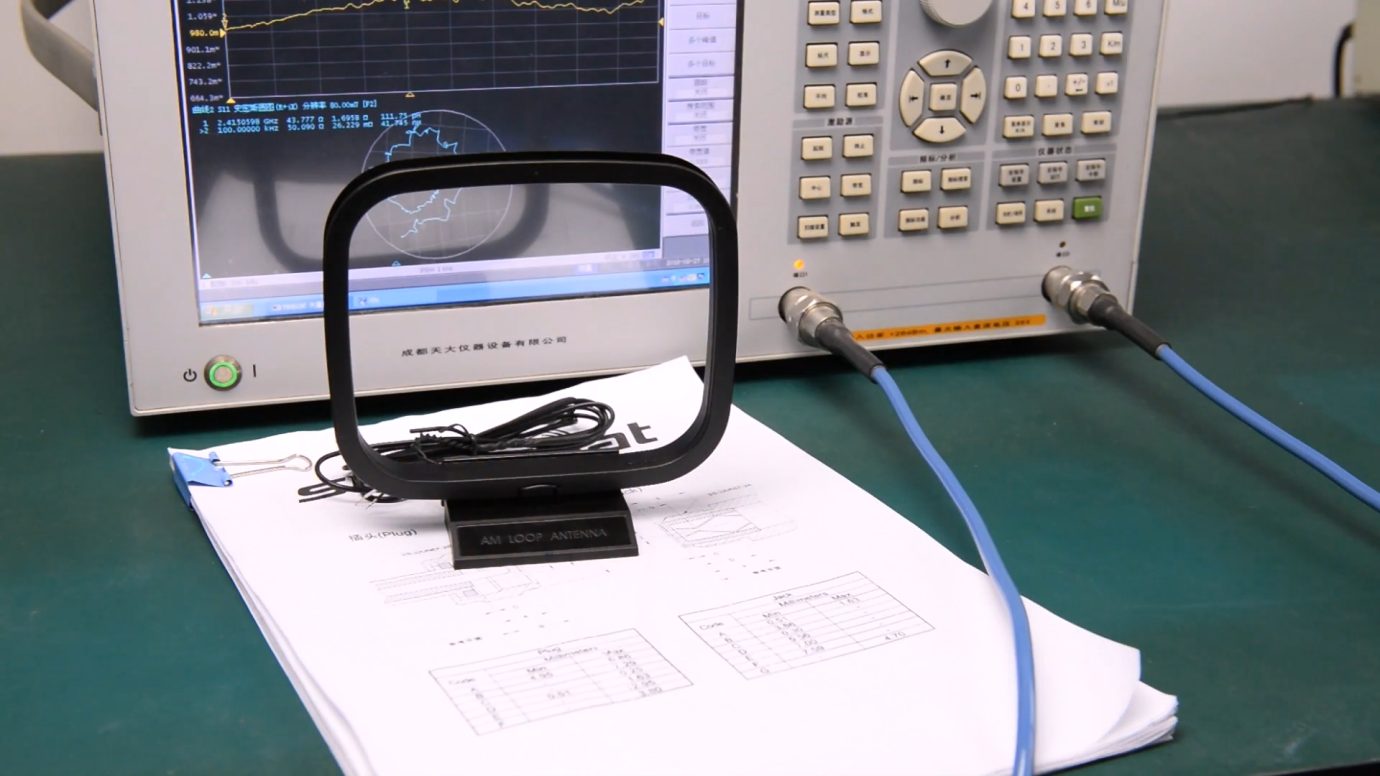Sometimes your radio experiences poor reception. Perhaps you are blaming your signal or the distance from a transmitting tower. But your radio’s antenna could be faulty.
Most AM radios have ferrite coil antennae which are rectangular bars of considerable sizes. They allow the radio to connect to local stations. To enhance your signal reception you need to improve your radio antenna.
The AM loop antennas function well, especially outdoors. You can construct one at home using coil and insulated wires. Then re-route the antenna wires. Move it closer to the radio while modulating the capacitor in upward and downward strokes. It will magically amplify the weak signals making even your weakest radio station clear.
Loop Antennas
Loop antennas, just according to their name, are copper wires that take the shape of a loop. The copper wires are looped on nonconductive frames, and it could be one or several loops. These insulating frames are usually connecting two wood frames to form an X-shaped structure.
Spiral loop antennae have their copper windings beginning from one edge of the X-shape structure and culminating/ending at the center – of the X-shape.

As for the edge-shaped loop antennae, their X-shaped frames are carved out from 1-by-6 inch type of boards. Each end of the board is notched at an interval of half an inch. Then the copper wires are looped all over the edges of the frame. However, in both instances, each end of the 2 wires is linked to a variable 365-picofarad capacitor. This capacitor tunes the antennas to the proper frequency for a radio station. (1)
How to Make an AM Loop Antenna
To make an am loop antenna you will need the following (circuit components):
- Insulated wires – over 100’
- Zip ties or tapes
- 2 alligator clips
- 1 to 4-feet ground stake(s) – metal stake will do, or get over ½’’ diameter pipes
- 1 adjustable pipe clamp compatible with your metal stake
After assembling these items, you can start making your AM loop antenna. Follow the procedure below:
- Use seven turns to form a 3-inch coil and make it round using the zip ties. The alligator clip will be connected only to over 60’ of the antenna wire. So, be certain to have over 100’ wire.
- Over 40′ of your antenna wire will go to the ground stake. Ensure enough length of the antenna wire is left, while over 60′ gets connected to the clip.
- Now, stretch your antenna wire perpendicularly to your desirable radio station. This will guarantee maximum signal arresting or reception. Mount your antenna to at least 8 feet for safety.
- Hold the end of the antenna wire in and then clip it to the coil. You may use a knife or diagonal pliers to do this if you do not have alligator clips.
- Proceed to clip your wire to a clamp. You may dump some water into the soil to make it more conductive.
Circuit Operation

Finally, tune the radio to the weakest station. You may use a signal meter to track signal strength increase. Move your coil closer to the radio until the station starts to improve. You should adjust the capacitor gently, in up and down strokes. Also, try to move your loop antennae from left to right – this is because the loop antennae are directional.
You do not need to connect your antenna to the radio. The coil will magically increase the signal, and then the ferrite antenna (inside the radio) will pick it up inductively. You will be surprised to see a previously inaudible station goes full power!
The AM loop antennas work well on the AM band due to the properties of these frequencies. They can also function in other radio modulations but with slight modifications. Yes, improvisation is necessary due to variations in the frequencies.
Building this type of antenna is also very easy. Start by taking your copper wire and making 16 turns on any square frame available. Proceed and estimate the 15-by-1.5-inch structure. That’s it; this antenna will cover all standard AM communication frequencies – 550 to 1700 kHz.
How to Build an Edge Wound Loop Antenna
To seamlessly build an edge wound antenna, you will need to have the following assembly of tools:
- Two, 18-inch, 1-by-6 inch boards
- A pencil or a marker
- A small hacksaw
- A square
- 22-gauge copper wire
- A variable capacitor
To make an AM wound loop antenna at home, carefully follow the below-mentioned procedure:

- Grab two 18-inch (1-by-6 inch) boards. And mark with a pencil or any other marker, the midpoint on one of the edges.
- Proceed to place other marks on your boards at 3/8 inch on one side of the midpoint. You should obtain a 3/4 – inch right on the center of your boards.
- Using a square, indicate a slot that starts at the marks you have made, then runs it to the middle of the flat side of the two boards. In essence, any 1-by-6 inch piece measures 3-quarters of an inch by five –and-a-half-inches. So, the middle section of the flat side will be two-and-three-quarter inches.
- Now, use a small (size) handsaw to slice the slots you just marked out of each board. Align the slots and then push the edges on the outside part of the board until they get to the bottom of the slot. If you do it correctly, you will get an X-shaped frame.
- Using your hacksaw, describe 8, 1/2 -inch deep slots. Make a one 1/2 an inch slot on all the 4 ends of your wood frame.
- Finally, wrap a 22-gauge copper wire around the outside parts of the frame, through the slots. You can now mount the capacitor on the inside surface of the frame.
- After the variable capacitor mounting, continue to connect the ends (both) of the copper wire to the terminals of the capacitor.
How to Connect an AM Loop Antenna
You can connect your AM loop antenna easily. Only one loop of a solid copper wire of about 6 inches (diameter) is enough to connect an AM loop antenna to the radio receiver. Also, note that the ends of your copper wires will be the antenna terminals. Join the ends of your copper wire to the 2 ends of a coax cable. Then strip the ends of the antenna terminals followed by connecting them to the radio receiver. That will enable the antenna tuner to tune the signal from the AM loop antennas.
Take a look at some of our related articles below.
- Best car radio antenna
- What is the best TV antenna signal booster
- How to connect outdoor antenna to multiple TV
References
(1) type of boards – https://makezine.com/2011/12/02/different-types-of-circuit-boards/
Video Reference

